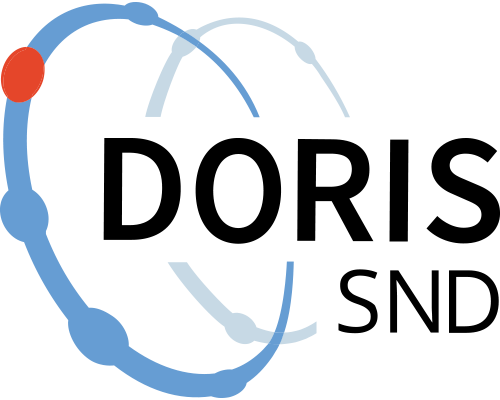Spatial Morphology Lab 01. International laboratory for comparative research in urban form. Street networks, Sweden - Non-Motorised network of Eskilstuna
https://doi.org/10.5878/0pnq-sm82
GIS-datasets for the Street networks of Stockholm, Gothenburg and Eskilstuna produced as part of the Spatial Morphology Lab (SMoL).
The goal of the SMoL project is to develop a strong theory and methodology for urban planning & design research with an analytical approach. Three frequently recurring variables of spatial urban form are studied that together quite well capture and describe the central characteristics and qualities of the built environment: density, diversity and proximity.
The first measure describes how intensive a place can be used depending on how much built up area is found there. The second measure captures how differentiated the use of a place can be depending on the division in smaller units such as plots. The third measure describes how accessible a place is depending on how it relates with other places. Empirical studies have shown strong links between these metrics and people's use of cities such as pedestrian movement patterns.
To support this goal, a central objective of the project is the establishment of an international platform of GIS data models for comparative studies in spatial urban form comprising three European capitals: London in the UK, Amsterdam in the Netherlands and Stockholm in Sweden, as well as two additional Swedish cities of smaller size than Stockholm: Gothenburg and Eskilstuna.
The result of the project is a GIS database for the five cities covering the three basic layers of urban form: street network (motorised and non-motorised), buildings and plots systems.
The data is shared via SND to create a research infrastructure that is open to new study initiatives. The datasets for Amsterdam will also be uploaded to SND. The datasets of London cannot be uploaded because of licensing restrictions.
The street network GIS-maps include motorised and non-motorised networks. The non-motorized networks include all streets and paths that are accessible for people walking or cycling, including those that are shared with vehicles. All streets where walking or cycling is forbidden, such as motorways, highways, or high-speed tunnels, are not included in the network.
The non-motorised network layers for Stockholm and Eskilstuna are based on the Swedish national road database, NVDB (Nationell Vägdatabas), downloaded from Trafikverket (https://lastkajen.trafikverket.seOpens in a new tab, date of download 15-5-2016, last update 8-11-2015). For Gothenburg, it is based on Open Street Maps (openstreetmap.orgOpens in a new tab, http://download.geofabrik.deOpens in a new tab, date of download 29-4-2016), because the NVDB did not provide enough detail for the non-motorized network, as in the other cities. The original road-centre-line maps of all cities were edited based on the same basic representational principles and were converted into line-segment maps, using the following software: FME, Mapinfo professional and PST (Place Syntax Tool). The coordinate system is SWEREF99TM.
In the final line-segment maps (GIS-layers) all streets or paths are represented with one line irrespectively of the number of lanes or type, meaning that parallel lines representing a street and a pedestrian or a cycle path running on the side, are reduced to one line. The reason is that these parallel lines are nor physically or perceptually separated, and thus are accessible and recognized from pedestrians as one “line of movement” in the street network. If there are obstacles or great distance between parallel streets and paths, then the multiple lines remain. The aim is to make a skeletal network that better represents the total space, which is accessible for pedestrians to move, irrespectively of the typical separations or distinctions of streets and paths. This representational choice follows the Space Syntax methodology in representing the public space and the street network.
We followed the same editing and generalizing procedure for all maps aiming to remove errors and to increase comparability between networks. This process included removing duplicate and isolated lines, snapping and generalizing. The snapping threshold used was 2m (end points closer than 2m were snapped together). The generalizing threshold used was 1m (successive line segments with angular deviation less than 1m were merged into one). In the final editing step, all road polylines were segmented to their constituting line-segments. The aim was to create appropriate line-segment maps to be analysed using Angular Segment Analysis, a network centrality analysis method introduced in Space Syntax.
All network layers are complemented with an “Unlink points” layer; a GIS point layer with the locations of all non-level intersections, such as pedestrian bridges and tunnels. The Unlink point layer is necessary to conduct network analysis that takes into account the non-planarity of the street network, using such software as PST (Place Syntax Tool).
Documentation files
Documentation files
Citation and access
Citation and access
Data access level:
Creator/Principal investigator(s):
- Kailun Sun - Chalmers University of Technology
Research principal:
Data contains personal data:
No
